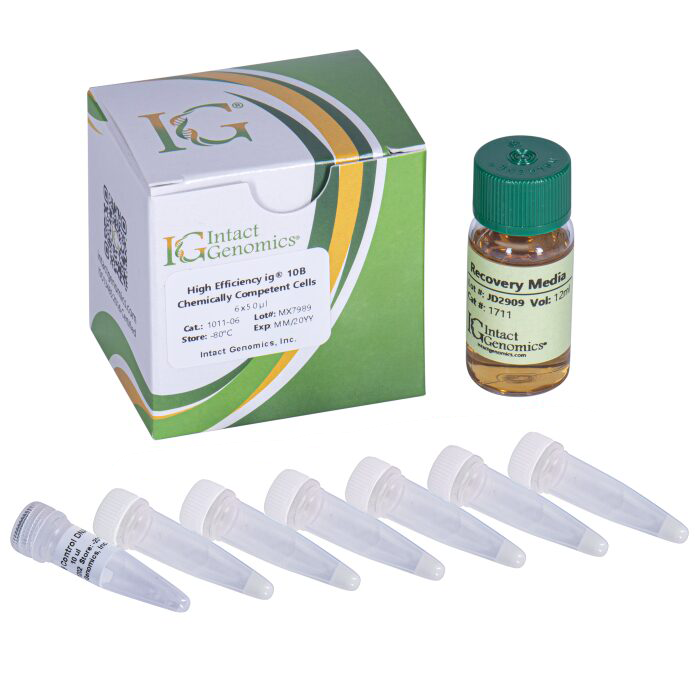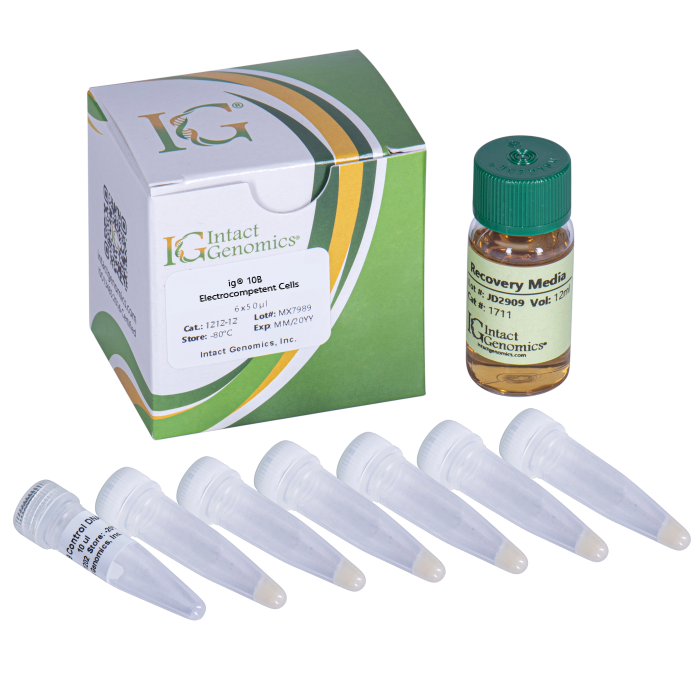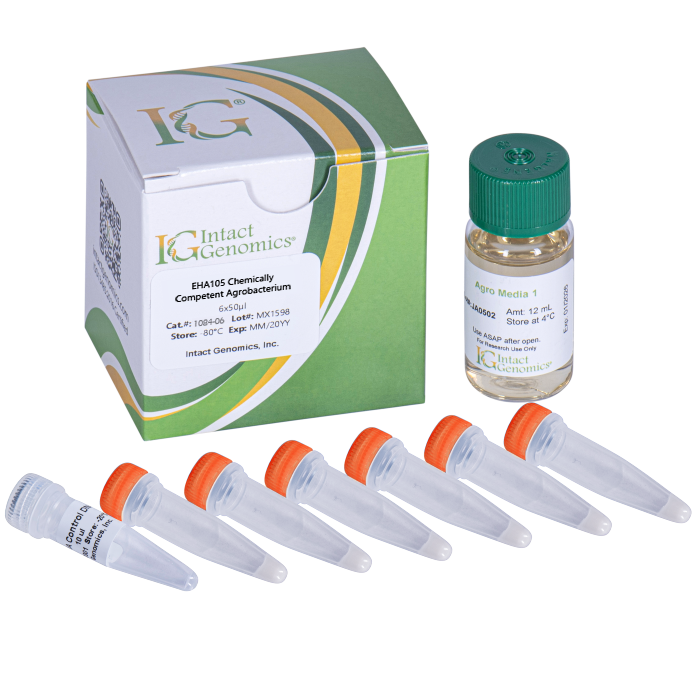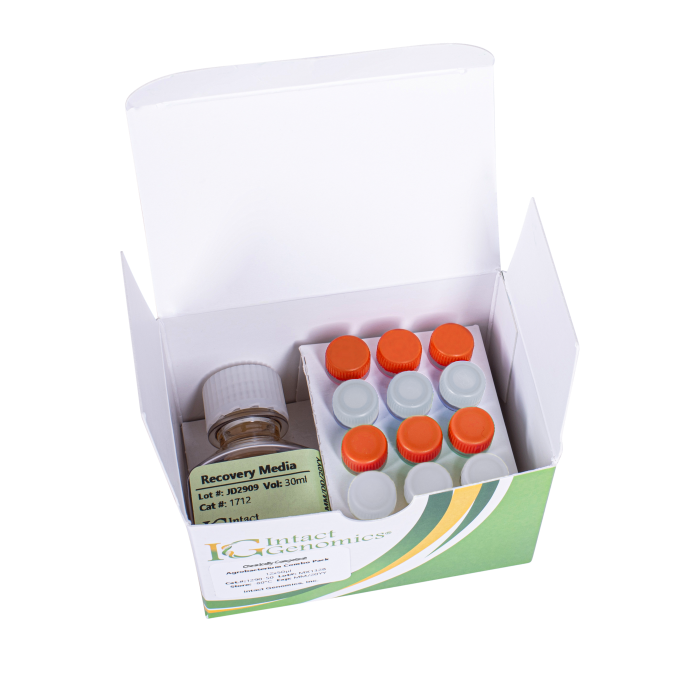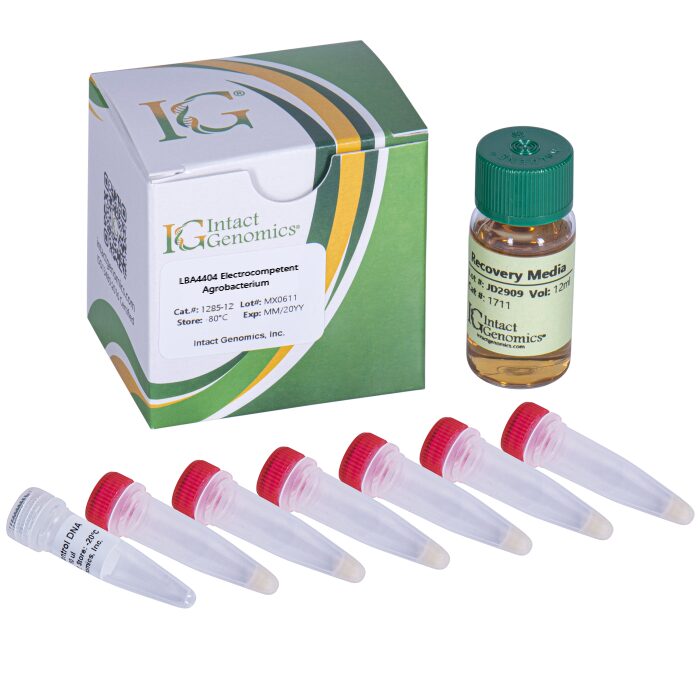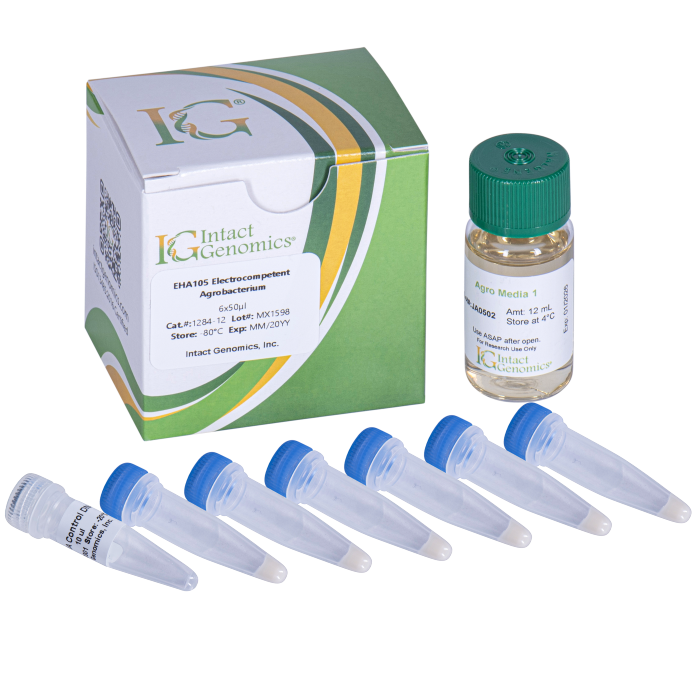Description
Intact Genomics 5 alpha Electrocompetent E. coli cells are suitable for high efficiency transformation in a wide variety of routine applications such as plasmid isolation, cloning, and subcloning. Mutations in endA1 and recA1 ensure increased plasmid yield and improved plasmid quality.
Competent cell type: Electrocompetent
Derivative of: DH5-alpha
Species: E. coli
Format: Tubes
Transformation efficiency: ≥2 x 1010 cfu/µg pUC19 DNA
Blue/white screening: Yes
Shipping condition: Dry ice
Reagents Needed for One Reaction
ig® 5 alpha Electrocompetent Cells: 25 µl
DNA (or pUC19 Control, 10 pg/µl): 1 µl
Recovery medium: 1 ml
Storage
ig™ 5 alpha Electrocompetent Cells: -80 ºC
pUC19 control DNA: -20 ºC
Recovery medium: 4 ºC
Genomic Features
ig® 5-alpha Electrocompetent Cells have the following features:
- ≥2 x 1010cfu/µg efficiency with electroporation
- Greatly increased plasmid yield and quality due to endA1 mutation
- High-efficiency transformation with plasmids 30 kb in size
- Blue/white screening of recombinant clones due to lacZΔM15
- Ensured insert stability due to recA1 mutation
Genotype
Φ80 Δ(lacZ)M15 fhuA2 Δ(argF-lacZ) U169 phoA glnV44 gyrA96 recA1 relA1 endA1 thi-1hsdR17
Quality Control
Transformation efficiency is tested by using the pUC19 control DNA supplied with the kit and using the protocol given below. Transformation efficiency should be ≥2 x 1010 CFU/µg pUC19 DNA. Untransformed cells are tested for appropriate antibiotic sensitivity.
General Guidelines
Follow these guidelines when using ig® 5 alpha Electrocompetent Cells:
- Handle competent cells gently as they are highly sensitive to changes in temperature or mechanical lysis caused by pipetting.
- Thaw competent cells on ice and transform cells immediately following thawing. After adding DNA, mix by tapping the tube gently. Do not mix cells by pipetting or vortexing.
Note: A high-voltage electroporation apparatus such as Bio-Rad Gene Pulser II #165-2105, capable of generating field strengths of 16 kV/cm is required.
Example Calculation of Transformation Efficiency
Transformation Efficiency (TE) is defined as the number of colony forming units (cfu) produced by transforming 1µg of plasmid into a given volume of competent cells.
TE = Colonies/µg/Dilution
Transform 1 µl of (10 pg/µl) pUC19 control plasmid into 25 µl of cells, add 950 µl of Recovery Medium. Dilute 10 µl of this in 990 µl of Recovery Medium and plate 50 µl. Count the colonies on the plate the next day. If you count 100 colonies, the TE is calculated as follows:
Colonies = 100
µg of DNA = 0.00001
Dilution = 50/1000 x 10/1000 = 0.0005
TE = 100/.00001/.0005 = 2.0×10101232-12 1232-24 1234-24 1234-48



